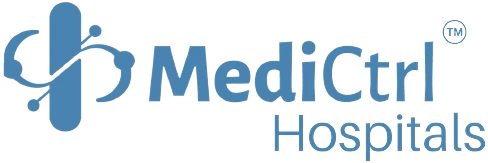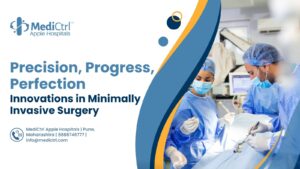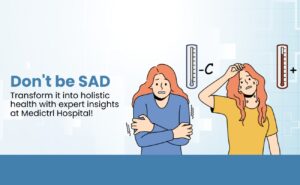Orthopedic injuries encompass various conditions that affect the musculoskeletal system, including bones, joints, muscles, ligaments, and tendons. These injuries can vary in severity, from minor sprains and strains to more severe fractures and tears. While orthopedic injuries can happen to anyone at any age, they are ubiquitous among athletes and the elderly. Understanding how to prevent and effectively treat orthopedic injuries is essential for maintaining an active, pain-free lifestyle.
The Importance of Injury Prevention
Preventing orthopedic injuries is far more manageable than dealing with the consequences after they occur. Injury prevention should start with lifestyle choices that promote overall musculoskeletal health. Here are some crucial tips for preventing orthopedic injuries:
Stay Active: Regular physical activity helps strengthen muscles and maintain joint flexibility. Engage in a balanced exercise routine with strength training, flexibility exercises, and aerobic movements like walking or swimming.
Warm Up and Cool Down: Always warm up before exercise or physical activity to prepare your muscles and joints for the increased workload. Likewise, cool down afterward to gradually return your body to a resting state.
Proper Technique: Using proper technique is essential whether you’re lifting weights or playing sports. Incorrect form can lead to unnecessary strain on your musculoskeletal system, increasing the risk of injury.
Wear Appropriate Gear: If you’re involved in sports or activities requiring protective gear or equipment, wear the appropriate gear. Helmets, knee pads, and proper footwear can significantly reduce the risk of injury.
Maintain a Healthy Weight: Excess weight stresses your joints, particularly those in your lower body. Maintaining a healthy weight can reduce the risk of joint problems and injuries.
Common Orthopedic Injuries
Despite our best efforts, orthopedic injuries can still occur. Here are some of the most common types:
Sprains and Strains: Sprains involve the stretching or tearing of ligaments, while strains affect muscles or tendons. Both can range from mild to severe and are often caused by sudden movements or overexertion.
Fractures: Fractures, or broken bones, can happen in various ways, from falls and accidents to sports-related injuries. Prompt medical attention is essential to ensure proper healing.
Tendonitis: Tendonitis is the inflammation of a tendon, typically due to overuse. It can cause pain, swelling, and limited range of motion.
Rotator Cuff Injuries: These injuries affect the shoulder muscles and tendons and can result from repetitive motions or traumatic events.
Osteoarthritis is a degenerative joint disease that occurs when the protective cartilage on the ends of your bones wears down over time. It can lead to joint pain, stiffness, and reduced mobility.
Herniated Discs: The discs between the vertebrae can herniate or rupture in the spine, causing back pain and potentially nerve compression.
Torn Ligaments: Ligaments are tough, flexible tissues that connect bones to other bones. A torn ligament can result from sudden twists or impacts, often seen in injuries like anterior cruciate ligament (ACL) tears in the knee.
Effective Treatment Approaches
When orthopedic injuries occur, seeking prompt and appropriate treatment is crucial for a successful recovery. Treatment approaches can vary depending on the type and severity of the injury but may include:
Rest: In many cases, resting the injured area is the first step in recovery. This allows the body to initiate its natural healing processes.
Physical Therapy: Physical therapists can design tailored exercise programs to improve the affected area’s strength, flexibility, and function.
Medications: Over-the-counter or prescription medications may help manage pain and reduce inflammation associated with orthopedic injuries.
Orthotics and Bracing: Custom orthotic devices or braces can support injured joints and promote proper healing.
Corticosteroid Injections: Injections of corticosteroids can help reduce inflammation and alleviate pain in cases of severe inflammation, such as with tendonitis or bursitis.
Surgery: In some instances, surgical intervention may be necessary to repair severe injuries, particularly fractures, torn ligaments, or herniated discs.
Lifestyle Modifications: Lifestyle changes, including weight management, ergonomic adjustments, and improved body mechanics, can help prevent further injury and promote long-term musculoskeletal health.
The Road to Recovery and Long-Term Health
Recovering from an orthopedic injury may require patience and commitment. Physical therapy, exercise, and adherence to treatment plans are often essential components of successful rehabilitation. Additionally, lifestyle adjustments can significantly impact the speed and quality of recovery.
For many individuals, preventing future orthopedic injuries is a priority. Incorporating the principles of injury prevention into daily life is a wise strategy. This includes maintaining a healthy weight, staying active, and using proper techniques in sports and activities.
Regular check-ups with healthcare providers specializing in orthopedics can also help detect and address emerging issues before they become significant problems. Individuals can enjoy an active and pain-free life regardless of age or activity level by prioritizing musculoskeletal health and taking steps to prevent and treat orthopedic injuries.
In conclusion, orthopedic injuries are common but preventable. With a focus on injury prevention and access to effective treatment options, individuals can maintain musculoskeletal health, prevent future injuries, and continue to engage in the activities they love. A commitment to a healthy lifestyle and prompt medical attention when needed is critical to ensuring a high quality of life and overall well-being.






